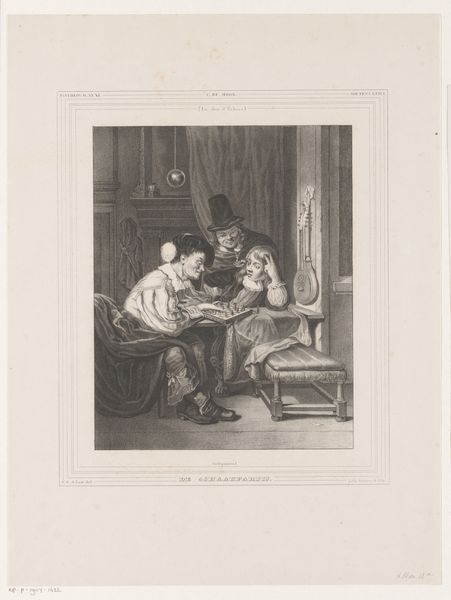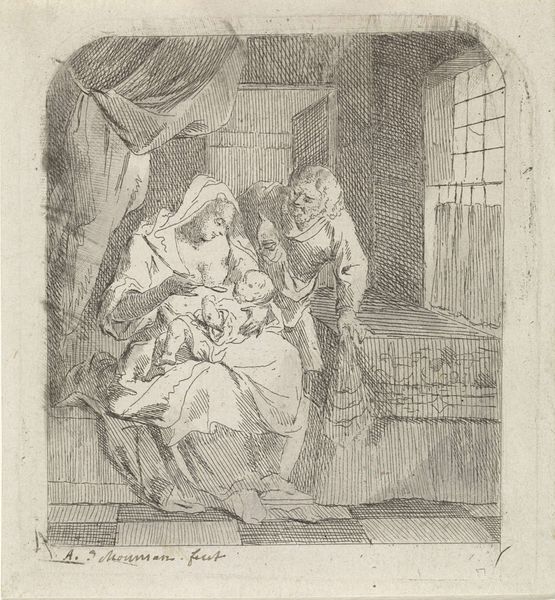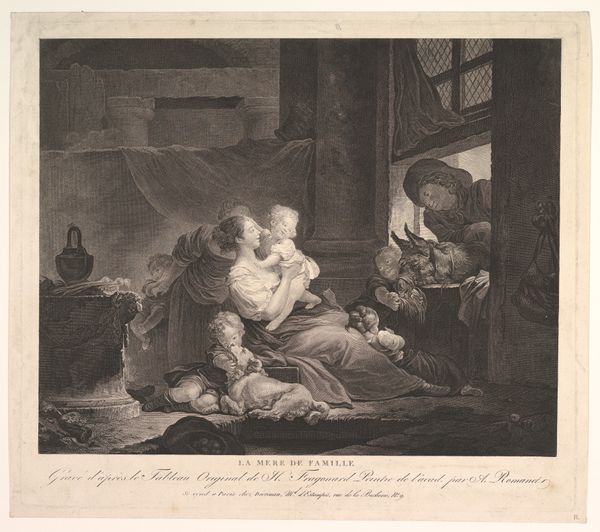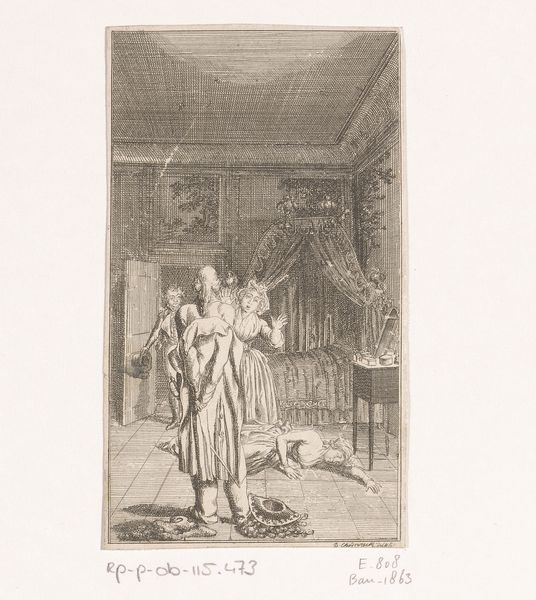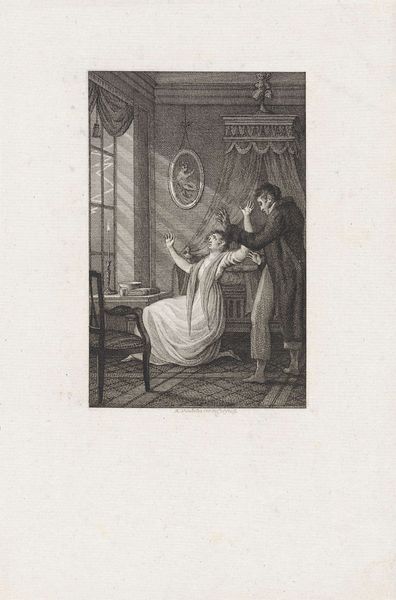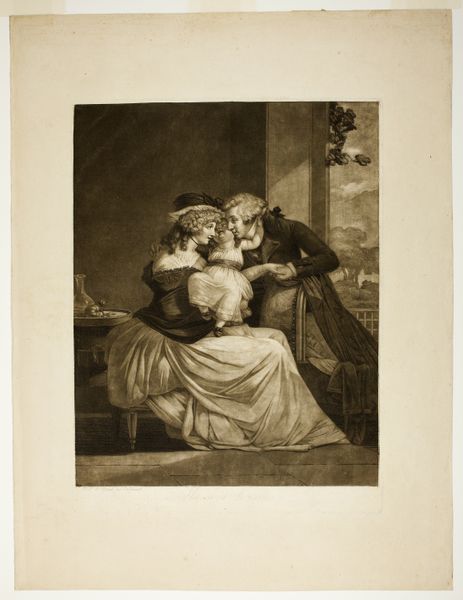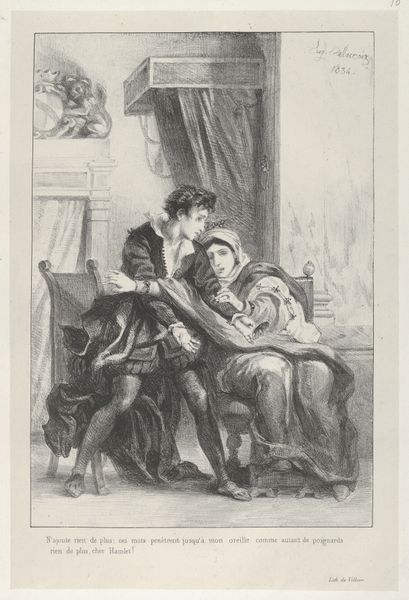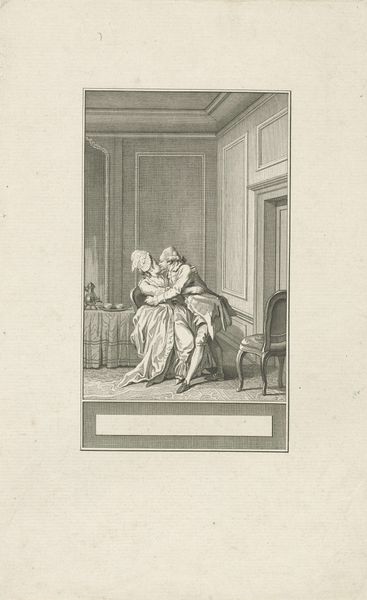
print, engraving
#
baroque
# print
#
genre-painting
#
history-painting
#
engraving
Dimensions: height 404 mm, width 291 mm
Copyright: Rijks Museum: Open Domain
Jacob Houbraken's engraving, "The Discovered False Virtue: Bely and Dirk," captures a scene rife with cultural symbolism. At first glance, it depicts a domestic interior where a man leans intimately towards a woman. But observe closely: the wine, the book, the overturned foot warmer, and the suggestive glances, all tell a tale of deception and lost innocence. Consider the intimate gesture of the man, a motif echoed through centuries, from classical depictions of seduction to modern portrayals of forbidden love. These gestures are imbued with a psychological weight, tapping into our collective memory of desire, temptation, and transgression. The overturned foot warmer, a symbol of warmth now cast aside, is a particularly potent signifier. It evokes a sense of disruption, a break from the norm, reminiscent of similar symbols found in morality plays. The image reminds us that art has always been a mirror reflecting and refracting our deepest fears and desires, engaging viewers on a subconscious level. This scene, like a recurring dream, resurfaces in various forms throughout history, evolving yet retaining its core message about the complexities of human morality.
Comments
No comments
Be the first to comment and join the conversation on the ultimate creative platform.

